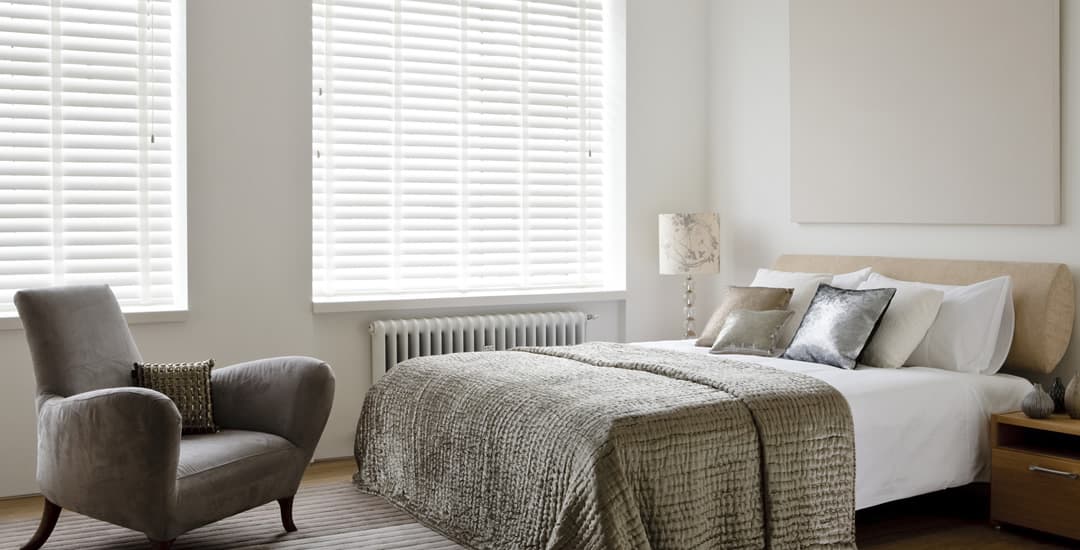
Which rooms are faux wood blinds suitable for? Most rooms, including kitchens, bathrooms, bedrooms, and living rooms. Faux wood blinds are even a good choice for children’s bedrooms too, as they’re extremely hardwearing and won’t bat an eyelid (or split a slat) if faced with the occasional encounter with a plastic sword.
In fact, there’s only really one room or environment that faux wood blinds are not always suitable for; conservatories or sunrooms, for reasons that I’ll cover later on.
This blog post will tell you more about which rooms faux wood blinds suit and why; but let’s start first of all with the basics of what a faux wood blind actually is!
Contents:
- 1. What is a faux wood blind?
- 2. Are faux wood blinds suitable for kitchens?
- 3. Are faux wood blinds suitable for bathrooms?
- 4. Are faux wood blinds suitable for bedrooms?
- 5. Are faux wood blinds suitable for children’s rooms?
- 6. Are faux wood blinds suitable for living rooms?
- 7. Are faux wood blinds suitable for home offices?
- 8. Are faux wood blinds suitable for bay windows, and other wide or tall windows?
- 9. Are faux wood blinds suitable for conservatories?
- 10. Are faux wood blinds suitable for my weird/interesting/awesome not-mentioned room?
1. What is a faux wood blind?
A faux wood blind is a type of Venetian blind; this being those slatted blinds that allow you to tilt the slats as well as raising and lowering the whole array. They’re made of thick, hardwearing PVC materials designed to mimic natural wood.
Faux wood blinds might fairly be described as the best all-round blind for most applications, as they’ve got so many things going for them. Functionally, they’re an excellent insulator, offer superior control of light and privacy, achieve a blackout effect when closed, and are waterproof, fire retardant, and child safe.
Aesthetically, they come in a wide range of finishes, from a natural wood effect that can emulate a wide range of different types of real wood, and can also come painted in more or less any shade of your choice. You can choose between decorative ladder tapes or minimalistic cords, and even the slat width and operational controls come in a range of options too.
All of which means that there’s not a lot that faux wood blinds can’t do, nor many conditions that they find challenging.
2. Are faux wood blinds suitable for kitchens?
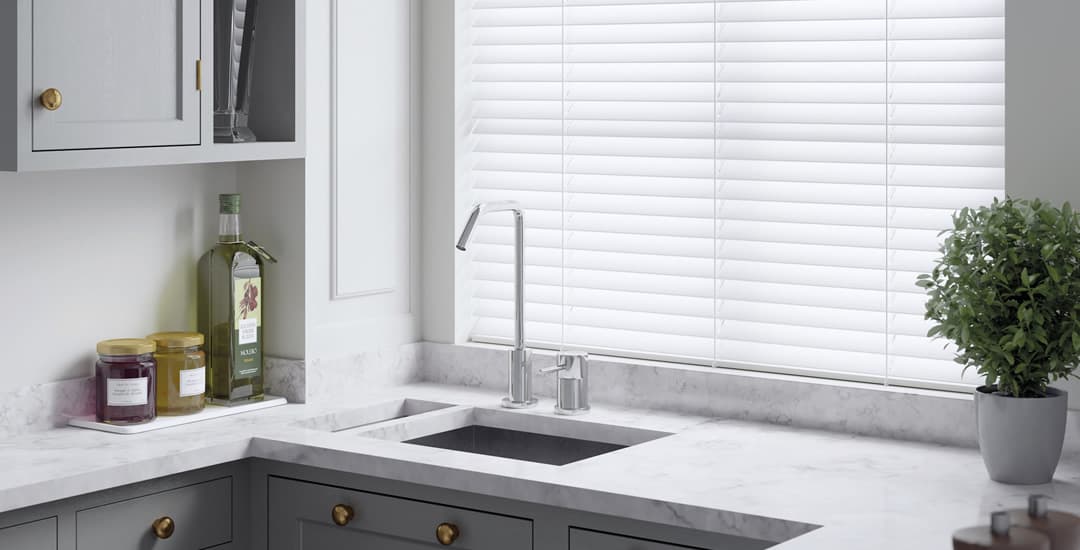
Yes, faux wood blinds are one of the small handful of options suitable for kitchen blinds. Blinds in kitchens need to be able to withstand humidity and potentially water splashes or high levels of condensation, which knocks many blinds out of the running from the get-go.
Also, blinds in kitchens are apt to get dirtier faster than blinds in other rooms, as cooking fats and oil particles in the air build up over time, and not only stick to the blind but attract dust to stick to it too. Faux wood blinds are very quick and easy to clean when this does happen, and because they’re fully waterproof, can take a washing down if needed as well.
3. Are faux wood blinds suitable for bathrooms?
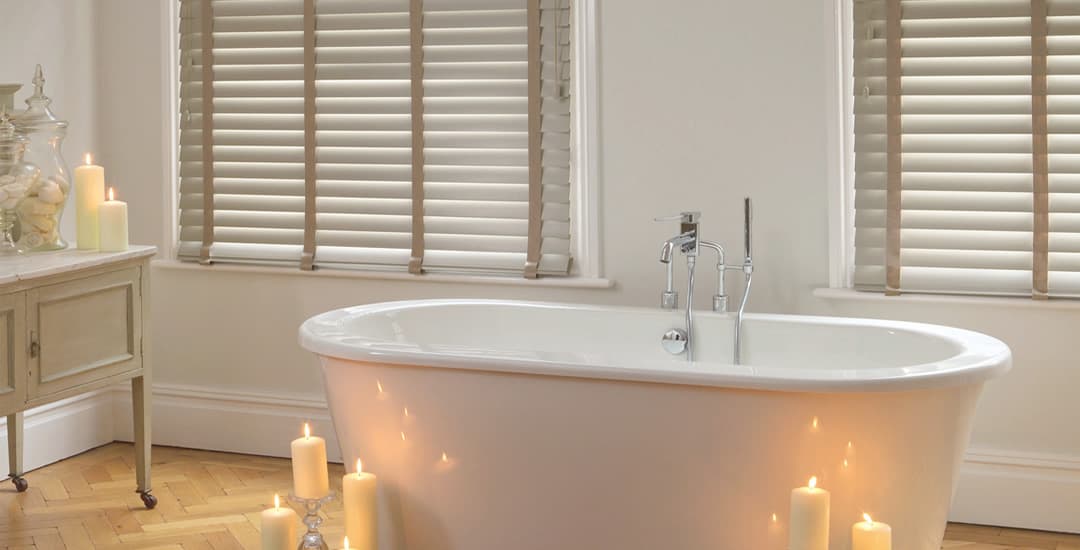
Yes, faux wood blinds are suitable for bathrooms for all of the same reasons they’re a good pick for kitchens.
Another couple of aspects that aren’t usually relevant to the same degree in kitchens as they are for bathrooms that makes faux wood blinds a good pick is their superior insulating qualities – bathrooms often being one of your cooler rooms – and the fact that fully closed, they achieve a blackout effect for total privacy.
If you enjoy whiling away the odd afternoon in the bath with a book, you can also tilt the slats to stop people outside from seeing in, while retaining your own filtered natural light too.
4. Are faux wood blinds suitable for bedrooms (adult ones)?
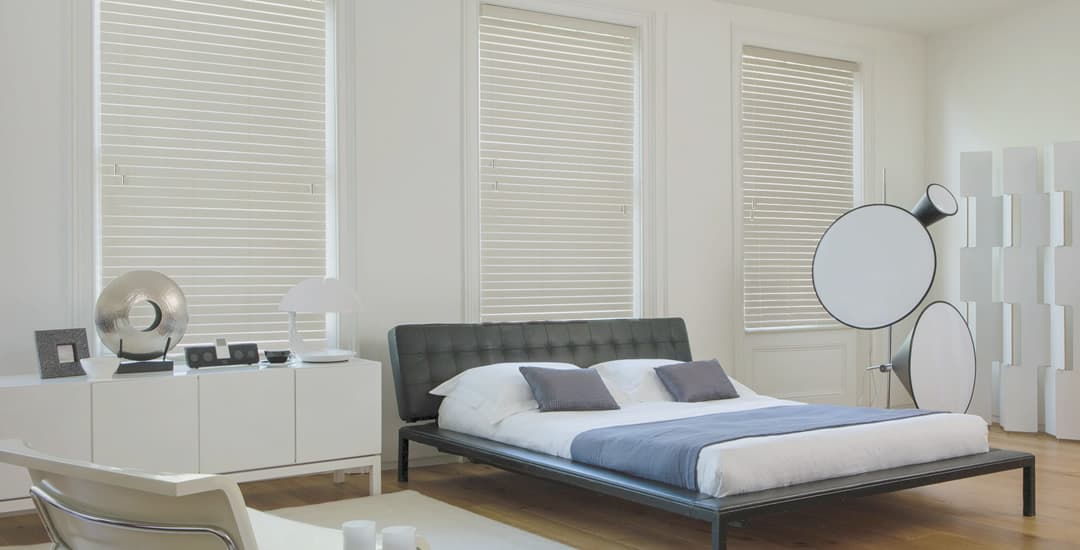
Yes, once more faux wood blinds are good for bedrooms as they offer excellent insulation and have a room darkening effect when closed. If you do prefer to wake up naturally with the sun but also don’t want early morning glare, tilting the slats to filter the light is another viable option.
5. Are faux wood blinds suitable for children’s bedrooms?
Yes, and actually you could make a good argument that faux wood blinds are the best blinds for children’s bedrooms overall. The same reasons as above for adult bedrooms all apply.
Also, the fact that faux wood blinds are very hardy (perhaps more so than any other type of blind) means they’re fit to withstand all but the most concerted of sustained attacks from a battalion of kids with makeshift weapons (makeshift being the word; baseball bats not included)!
While bedrooms, even children’s bedrooms, aren’t places we usually think of as being the sources of much water, we also know that kids can be hugely inventive about ruining things or trigging your “how the hell did you manage that and what with?” reflex.
This means that the fact faux wood blinds are waterproof may hold value here too; and should your child, say, decide to redecorate using their watercolour paints or crayons, faux wood blinds can be washed or wiped clean. They will not, of course, clean up very well from indelible marker pen or something else not designed to wash off, but frankly if your child has hold of a marker pen and is not afraid to use it, ruined blinds are likely to be a fairly minor highlight of the resultant carnage.
6. Are faux wood blinds suitable for living rooms?
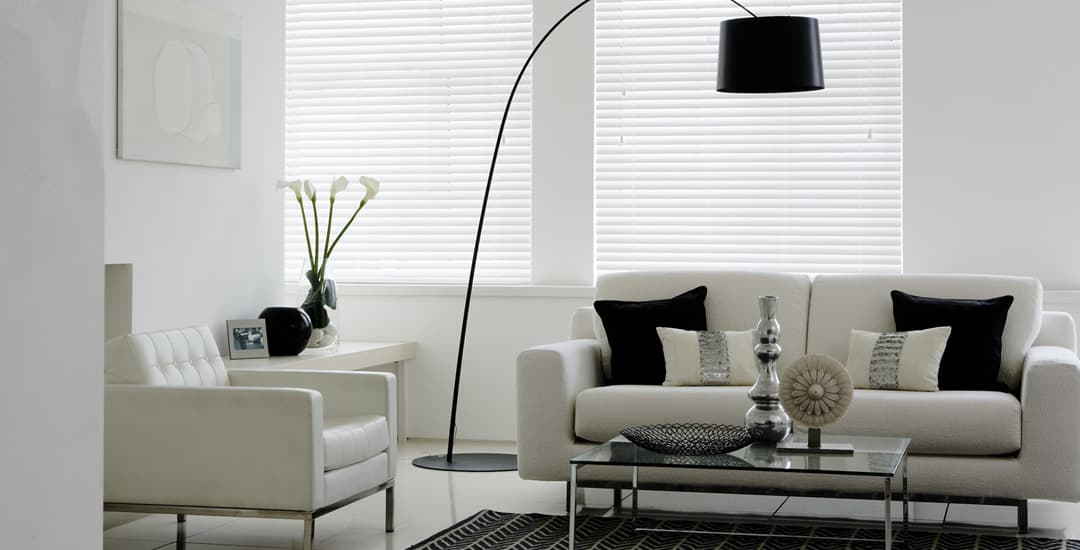
Yes, living rooms are one of the “easier” rooms to pick blinds for in general, as they don’t tend to come with next-level challenges like some rooms – the need to be waterproof, for instance, or generally, to fully block external light.
The tilting slats of faux wood blinds are one of the main reasons they’re popular for living rooms; as a room you probably spend a lot of time in at different times of day and for different reasons, the ability to filter light and adjust your view of the outside world and the outside’s view in really comes into its own here.
The blackout ability of faux wood blinds may be handy too for daytime TV watching or gaming to negate screen glare, and their insulating qualities come in handy as well; for most of us, the lounge is one of our larger rooms and has larger/more windows than most other rooms, which can make it costly or challenging to heat in winter.
7. Are faux wood blinds suitable for home offices?
Yes, faux wood blinds are a good pick for home offices, ticking many of the same boxes required as for living rooms. Their light blocking skills are handy for Zoom or Skype, as is the light and privacy filtering effect, to reduce screen glare and/or prying eyes from outside without losing all of your natural light.
Home offices are also sometimes cooler rooms of the home; or rooms you don’t want to spend a huge amount heating if they only see limited use. This means that the thermally insulating qualities of faux wood blinds come into their own again here.
8. Are faux wood blinds suitable for bay windows, and other wide or tall windows?
Yes, and in fact faux wood blinds look particularly good on wide windows and bay windows, and can be made for otherwise awkwardly wide applications too.
We can make faux wood blinds up to 260cm wide and 300cm long, which will cover all but the most hugenormous of applications.
Large windows are of course apt to lose more heat than smaller windows, which is another good reason to choose faux wood blinds for big windows as they’re perhaps the most insulating blinds of all and so, can help to reduce your heating spend.
One point to note though is that while we can make faux wood blinds up to three metres in drop, we would not really recommend these for doors as opposed to windows – like patio doors or French balcony doors.
This is because the depth of the stack of slats on a very long blind can be significant enough to occlude a reasonable amount of the top of the glass when the blind is open, which most people find doesn’t look great, and may even mean that tall folk need to duck to get under them!
9. Are faux wood blinds suitable for conservatories and sunrooms?
And finally… Is there anything faux wood blinds can’t do? Actually, yes. We don’t universally recommend using faux wood blinds for conservatories, sunrooms, or other rooms that get really, really hot in summer; say, potentially into the realms of 55 degrees Celsius or above.
As you probably know, 55 degrees Celsius is the type of temperature that would render a room deeply uncomfortable or even potentially dangerous for a person to spend much time in; and even most conservatories or sunrooms don’t get up to this sort of figure on even the hottest of days, which would mean a faux wood blind would be absolutely fine if this is the case in yours.
However, if you know or suspect that your room or parts of your room do sometimes reach temperatures in the 55 degrees Celsius ballpark, faux wood blinds aren’t a good choice. This is because sustained or frequent exposure to temperatures above 55 degrees will ultimately cause the PVC slats of your blind to warp.
For applications of this type, we recommend using a real wooden blind instead; or a fabric blind, this latter coming with the caveat that fabric blinds are apt to fade in bright light over time.
10. Are faux wood blinds suitable for my lighthouse?
Do you live somewhere weird and/or awesome or have a room type I haven’t mentioned, and want to know if faux wood blinds are a good choice for it? Drop me an email or ask in the comments and I will let you know.




